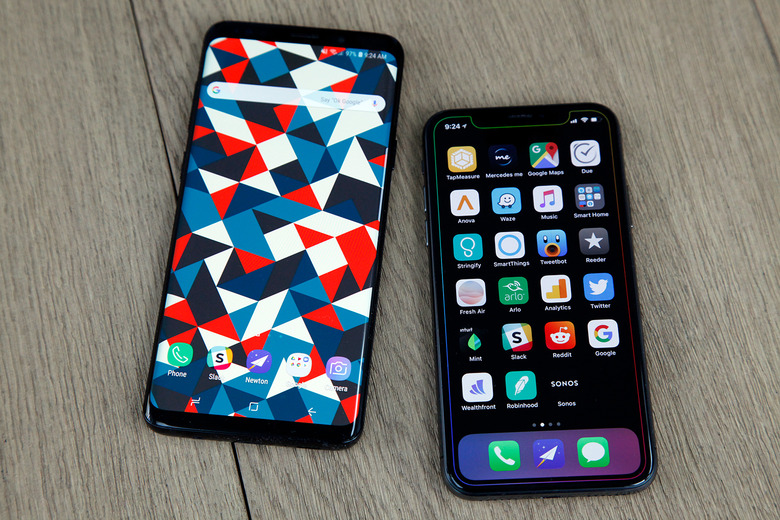The Galaxy S9 Is Seeing Real-World LTE Speeds That Make The iPhone X Look Antique
While the iPhone X might have been a trend-setting among Android phones in all the worst possible ways, Apple is far behind the curve when it comes to wireless technology. Its $1,000 phone doesn't support LTE-Advanced features, which means that it can't take advantage of the blazing-fast speeds networks are now rolling out in the wild.
But Samsung doesn't have that problem. Its phones have always been loaded with the latest in wireless technology, and this year is no different. The Qualcomm Snapdragon 845 chip inside the Galaxy S9 has a X20 modem, which supports peak speeds of 1.2Gbps. You aren't going to see that kind of speed outside of a lab right now, but as PC Mag found out, a handful of sites across the US support 500Mbps speeds right now, provided you have a very recent Samsung phone.
When testing at an AT&T License Assisted Access in Chicago, a PC Mag tester equipped with a retail Galaxy S9 and standard AT&T SIM achieved peak download speeds of 537Mbps. To put that in context, the average AT&T speed in the Midwest is about 14Mbps, a recent study found. The FCC defines high-speed broadband as 25Mbps, so a Galaxy S9 on an LAA AT&T site exceeds that by a few orders of magnitude.
License assisted access is a new technology that's gradually starting to be deployed by US networks. It works by sending data over unlicensed 5GHz spectrum, the same frequency used by Wi-Fi in homes, as well as the licensed LTE spectrum. By combining up to 10 channels, an LAA site and an LAA-capable device can achieve peak speeds over a gigabit, although you won't see that in the real world any time soon.
In reality, LAA is really meant to improve capacity, rather than peak speeds. With few devices capable of LAA just yet (basically only flagship Android devices from last year), the LAA network is still working well below capacity. When more devices are using the network at the same time, LAA will enable networks to stream live video to dozens of devices simultaneously, where previously they might have experienced congestion.
